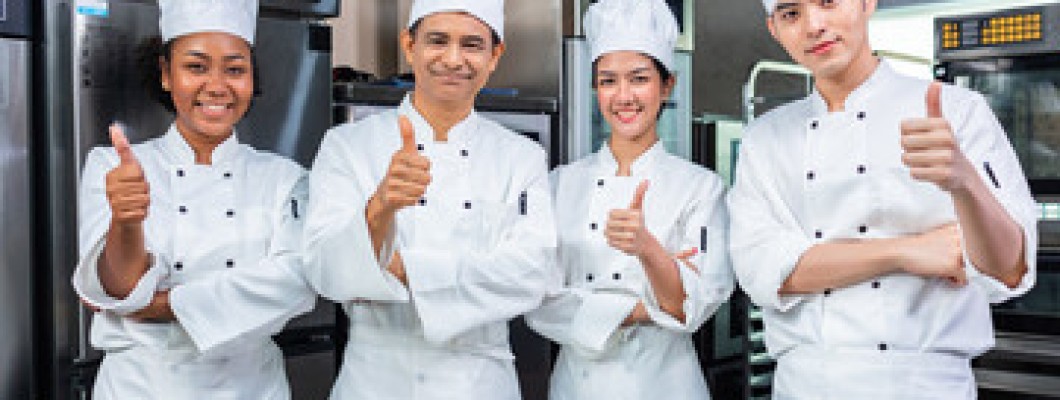
Restaurant uniforms serve several important purposes in the foodservice industry.
Here are some reasons why they are considered important:
1. Professionalism: Uniforms help create a professional and consistent
image for the restaurant. When all staff members wear uniforms, it conveys
a sense of unity and dedication to their roles, which can positively influence
customers' perceptions of the establishment.
2. Branding and Identity: Uniforms contribute to the overall branding and
identity of the restaurant. They can be designed to reflect the restaurant's
theme, cuisine, and ambiance, reinforcing the brand's image in the minds
of customers.
3. Hygiene and Food Safety: In the restaurant industry, hygiene and food
safety are paramount. Uniforms, such as chef coats and aprons, help
prevent contamination by providing a barrier between the staff's clothing
and the food. This is particularly important in kitchen areas where food is
being prepared.
4. Identification: Uniforms make it easy for customers to identify staff
members, from servers to managers. This improves communication and
customer service as patrons know who to approach for assistance.
5. Customer Experience: Well-designed uniforms contribute to a positive
customer experience. They help create a sense of order and
professionalism that can enhance the overall dining atmosphere, making
customers feel more comfortable and valued.
6. Employee Morale: Providing employees with uniforms can boost their
morale and sense of belonging. When staff members are dressed
uniformly, they feel like they are part of a team and share a common goal,
which can improve job satisfaction.
7. Equality: Uniforms promote equality among staff members. Regardless of
background or personal style, everyone wears the same attire, minimizing
distractions and potential bias related to clothing choices.
8. Regulation Compliance: In some regions, there are regulations or
guidelines for the attire that restaurant staff must wear. Uniforms help
ensure compliance with these regulations, preventing potential legal
issues.
9. Efficiency: Uniforms are often designed with functionality in mind. For
example, pockets in aprons or specific materials in chef coats can help
staff carry essential tools and items, enhancing their efficiency in
performing their tasks.
10. First Impressions: When customers enter a restaurant, one of the first
things they notice is the appearance of the staff. Well-designed uniforms
contribute to making a positive first impression and set the tone for the
entire dining experience.
Overall, restaurant uniforms play a multifaceted role in shaping the image of the
establishment, ensuring hygiene and safety, and contributing to a positive and
professional atmosphere for both employees and customers.

-250x250w.jpg)


